Summary
Revista Brasileira de Ginecologia e Obstetrícia. 2020;42(4):200-210
The present study is a systematic review of the literature to assess whether the presence of endometriosis determines or contributes to adverse obstetric outcomes.
The present work was carried out at the Hospital Israelita Albert Einstein, São Paulo, state of São Paulo, Brazil, in accordance to the PRISMA methodology for systematic reviews. A review of the literature was performed using PubMed, Web of Science and Scopus databases. The keywords used were: pregnancy outcome, pregnancy complications, obstetrical complications, obstetrics, obstetric outcomes and endometriosis. The survey was further completed by a manually executed review of cross-referenced articles, which was last performed on November 30, 2018.
The survey disclosed a total of 2,468 articles, published from May 1946 to October 2017. A total of 18 studies were selected to be further classified according to their quality and relevance.
The Newcastle-Ottawa Quality Assessment Scale was used for classification. Five studies of greater impact and superior evidence quality and 13 studies of moderate evidence quality were selected. We analyzed the studies for the characteristics of their patients plus how endometriosis was diagnosed and their respective obstetric outcomes taking into account their statistical relevance.
Analyses of the higher impact and better quality studies have shown high incidence of preterm birth and placenta previa in patients with endometriosis.
Placenta previa and preterm birth are the most statistically significant outcomes related to endometriosis, as indicated by our systematic review. The present information is useful to alert obstetricians and patients about possible unfavorable obstetric outcomes.
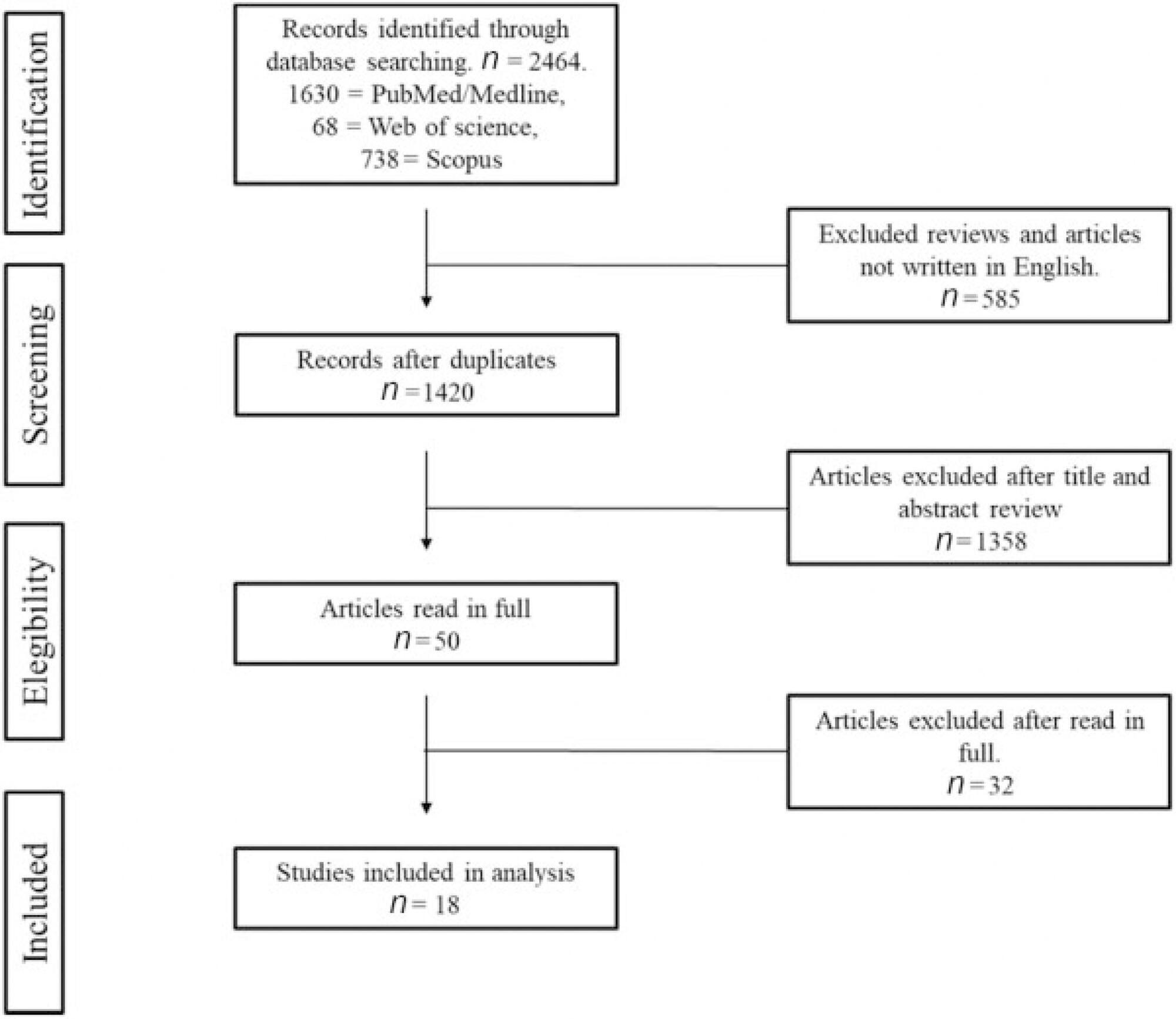
Summary
Revista Brasileira de Ginecologia e Obstetrícia. 2007;29(4):200-204
DOI 10.1590/S0100-72032007000400006
PURPOSE: the aim of this clinical study of the histological findings in nonpalpable breast lesions managed by surgical excision after wire localization. METHODS: a total of 48 women subjected to 51 preoperative localizations of nonpalpable, mammographically detected breast lesions during August 2001 to April 2005. Indications for biopsy were clustered microcalcifications, solid mass, radiologic parenchymal distortion and focal asymmetries. The lesions were localized preoperatively using hook wire methods, and all biopsies were performed under local anesthesia and venous sedation. RESULTS: histopathology revealed carcinoma in 16 biopsies (31.4%). Noninvasive carcinoma was found in 50% of malignant lesions. Successful lesion sampling was achieved at the first attempt in 100% of cases. Among all malignant lesions, positive-surgical margins were observed in 18.7%. Postoperative complications were a rare event in our series. Suture dehiscence was found in four patients (7.8%). Two of these (3.9%) had local infection. CONCLUSIONS: the hook-wire localization for nonpalpable breast lesions is a simple, accurate and safe method for detection of early breast cancers. The appropriate surgical approach in a single procedure is an excellent method for diagnosis and treatment for early stage, nonpalpable breast carcinoma.
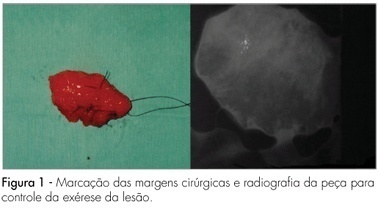
Summary
Revista Brasileira de Ginecologia e Obstetrícia. 2008;30(4):201-209
DOI 10.1590/S0100-72032008000400008
Polycystic ovary syndrome (PCOS) occurs in 6 to 10% of women during the reproductive age. Insulin resistance and compensatory hyperinsulinemia are currently two of the main factors involved in the etiopathogenesis of PCOS. The objective of the present review was to discuss the controversies related to the treatment of infertile women with PCOS and during their pregnancy, focusing on the European Society of Human Reproduction and Embryology (ESHRE) and the American Society for Reproductive Medicine (ASRM) current consensus.
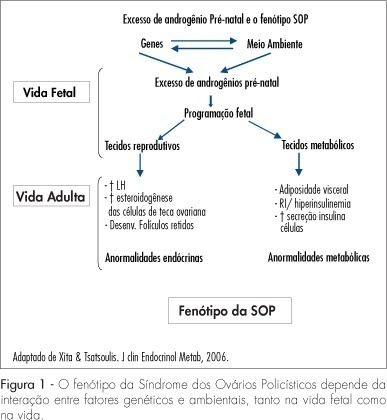
Summary
Revista Brasileira de Ginecologia e Obstetrícia. 2016;38(4):201-206
Lissencephaly is a genetic heterogeneous autosomal recessive disorder characterized by the classical triad: brain malformations, eye anomalies, and congenital muscular dystrophy. Prenatal diagnosis is feasible by demonstrating abnormal development of sulci and gyri. Magnetic resonance imaging (MRI) may enhance detection of developmental cortical disorders as well as ocular anomalies. We describe a case of early diagnosis of lissencephaly type 2 detected at the time of routine second trimester scan by three-dimensional ultrasound and fetal MRI. Gross pathology confirmed the accuracy of the prenatal diagnosis while histology showed the typical feature of cobblestone cortex. As the disease is associated with poor perinatal prognosis, early and accurate prenatal diagnosis is important for genetic counseling and antenatal care.
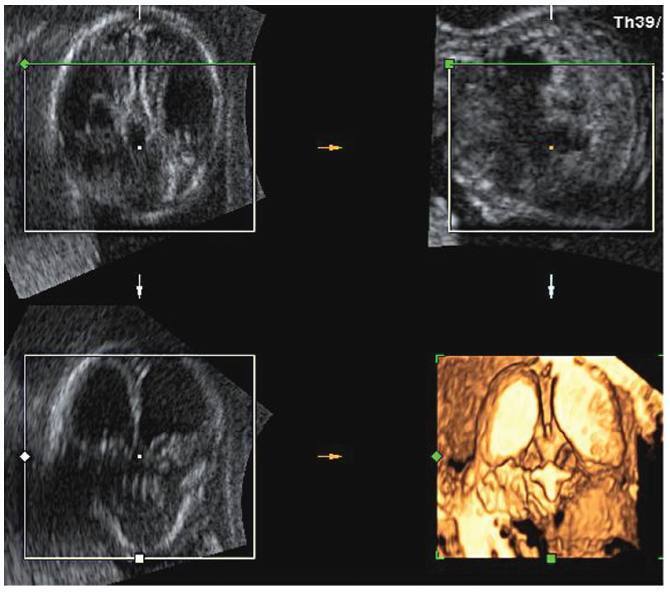
Summary
Revista Brasileira de Ginecologia e Obstetrícia. 2003;25(3):201-205
DOI 10.1590/S0100-72032003000300009
PURPOSE: to study frequency of the knowledge and practice of breast self-examination (BSE), characterizing some factors that may interfere in its practice. METHOD: during one month, 505 women, who were patients of the "Centro de Saúde Escola-Marco (Belém-Pará)", were interviewed, answering questions about the practice and knowledge on breast self-examination and associated factors. Statistical analysis was perfoprmed using the chi2 test. RESULTS: 96% of the women knew about BSE. Among these, 58.9% learned about it via the midia. However, the way that provided the most correct practice was medical orientation (37.5%). Only 21.8% of the women performed the examination monthly. The main reason for the low adhesion was unfamiliarity with the technique (48.2%). Women between 30 and 39 years presented the highest percentage of monthly practice (30.2%). The women (58.2%) who carried out the monthly examination had at least an incomplete high school degree. In 58.7% of the cases, the gynecologist did not stimulate the practice of the BSE. CONCLUSIONS: although BSE is known by practically all the interviewees, more than one third of them do not practice it. The main reason of the low adhesion was the unfamiliarity with the technique. Level of instruction and age of the women interfered in the practice of BSE, but presence of breast cancer cases in the family did not.
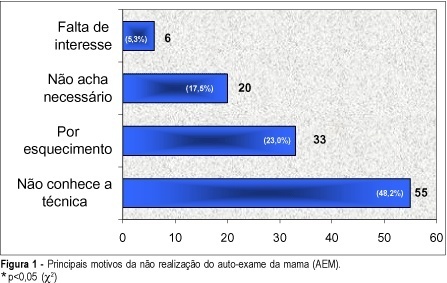
Summary
Revista Brasileira de Ginecologia e Obstetrícia. 2000;22(4):201-208
DOI 10.1590/S0100-72032000000400003
Purpose: to evaluate the modifications due to premature rupture of the membranes of variables of the fetal biophysical profile, comparing them to the ones found in pregnant women with intact membranes. In the group with premature rupture of the membranes, the association of biophysical variables with the Apgar score at the first and fifth minutes and with the occurrence or not of clinical chorioamnionitis and neonatal infection was analyzed. Patients and Methods: in a prospective study, 112 fetal biophysical profiles were established in 60 pregnant women with premature rupture of the membranes at a period between the 28th and the 40th week of pregnancy, and only the last fetal biophysical profile was analyzed and compared to other 60 fetal biophysical profiles of pregnant women with gestational ages identical to the group of study and with intact membranes. Results: statistical analysis of the results revealed that the premature rupture of the membranes diminished the reactivity, not interfering with the body movements of the fetus. It also diminished the frequency of the respiratory movements of the fetus, not determining modifications of the fetal tonus, and considerably decreasing the amniotic fluid index. In terms of prediction of chorioamnionitis and neonatal infection, the fetal biophysical profile did not show any significant statistic validity; however, when the biophysical variables were present, the correlation with the absence of chorioamnionitis and neonatal infection was clearly shown. The result of the last fetal biophysical profile was strongly associated with the Apgar score at the 5th minute. Conclusion: the fetal biophysical profile should be used routinely in pregnant women with premature rupture of the membranes with the purpose of evaluating fetal vitality, and in order to detect those fetuses at a higher risk of infection, specially those with gestational ages of less than 34 weeks. Regarding those fetuses it is best to use a conservative approach.
Summary
Revista Brasileira de Ginecologia e Obstetrícia. 2002;24(3):201-204
DOI 10.1590/S0100-72032002000300009
Chronic placental abruption is a rare condition that can be early detected by ultrasound. Vaginal bleeding and uterine excitability can be present in an infrequent way. Chronic placental abruption physiopathology is unknown and there are no consistent medical risks that predispose to this condition. The perinatal outcome is poor and is often associated with prematurity and fetal or perinatal death. The obstetric treatment depends on the gestational age, fetal conditions and the size of the clot. We present a case of a chronic placental abruption diagnosed in a 14-week gestation complicated by intrauterine growth retardation, oligohydramnios and perinatal death.
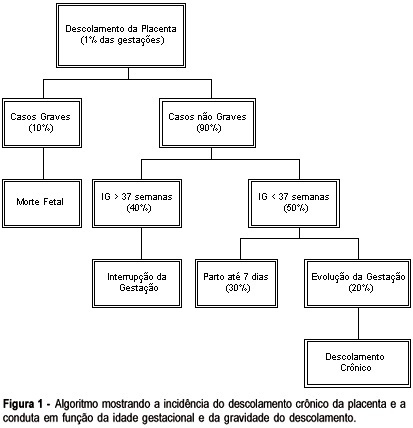
Summary
Revista Brasileira de Ginecologia e Obstetrícia. 2004;26(3):201-206
DOI 10.1590/S0100-72032004000300005
OBJECTIVE: to evaluate platelet parameters in normal and pre-eclamptic pregnant women. METHODS: a controlled cross-sectional study was carried out. The medical records of the women who had delivered in the Hospital Universitário Júlio Müller-Cuiabá/MT, from January 1, 2001 to July 31, 2002, were reviewed. The pregnant women were pre-selected based on their platelet parameters analyses performed after the 28th week of gestation. Two groups of study were analyzed: PE group (36 pre-eclamptic women) and NP group (58 normal pregnant women). The platelet parameters analyzed by the automated method were: platelet counts, mean platelet volume (MPV), platelet distribution width (PDW) and platelet - large cells ratio (P-LCR). For statistical analysis the Student t-test and the chi-square test were used to compare the groups, and to evaluate the degree of dependence among the variables, the coefficient of determination was used (r²). For all these tests, the significance level considered was p < 0.05. RESULTS: the platelet counts did not show difference between the two groups. However, all other platelet indices (MPV, PDW and P-LCR) were significantly higher in the PE group. The severity of the disease was documented in 91.7% of the pre-eclamptic women, despite the fact that none of the patients included had shown thrombocytopenia as a criterion of severity. Negative correlation was detected between the platelet counts and the other platelet parameters analyzed and there was positive correlation between MPV and PDW, MPV and P-LCR, and PDW and P-LCR. Positive correlation was also observed between MPV, PDW and P-LCR, and the maximum systolic and diastolic blood pressures. CONCLUSIONS: pre-eclampsia was associated with these platelet parameters, suggesting alterations of the platelet functions. The clinical applicability of these parameters, as early markers of severity of pre-eclampsia, needs more studies.